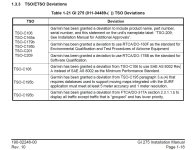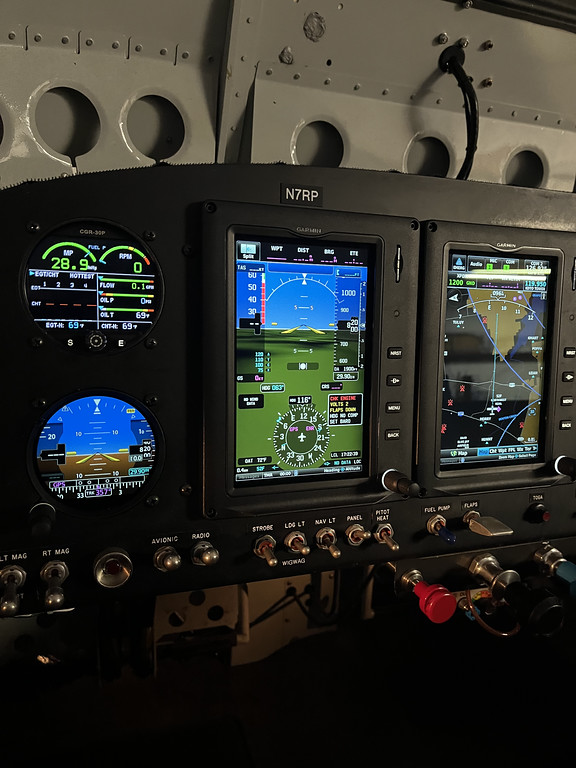I've recently installed my second Skyview system and come across a very troubling situation regarding the non-reversion of a secondary ADAHRS.
The short version of the story is that I installed the system in an already flying airplane, flew a validation/calibration flight a month ago, and all went well. The system includes two screens and both a primary and secondary ADAHRS, among other things The next day I went out to the airplane to fly and around 30 seconds after startup everything that connected to the ADAHRS put up red Xs and there was a message that said "ADAHRS Fail Internal Error: Multiple Sensors".
After some back and forth with tech support, including lots of network configuration iterations, making some new test cables, half a day of unbundling and testing wires, we arrived at the only way this message could occur is if both ADAHRS units failed. I sent them both back and they arrived at Dynon on 6/22.
It took until today (7/11) for them to finish repairing the units (no stock for replacements, so they say). On the phone I asked what they found wrong with the units, and they said that the primary had several sensors failed, which they repaired.
What was wrong with the secondary? Absolutely nothing, so they say now. Before sending in the units, the only way that this error could have been presented was if both units were completely failed.
So I asked, why do I even have a secondary? He said, "sometimes it happens."
We trust our lives to Dynon, I don't think it should happen, and I think they owe us a lot more information about what a secondary ADAHRS is actually going to do and when. I don't think a "sometimes (the primary breaks in a way such that there is no useable secondary but we aren't going to tell you what that is because maybe we don't know or maybe we just don't want to) is an acceptable answer.
How careful am I going to have to think about taking the airplane somewhere and shutting down the engine, only to have it be stuck there for a month because of a single ADAHRS failure?
I don't think Dynon has done well in this situation for several reasons, most of which I can live with because I know Garmin might be just as bad or worse, but the non-reversion issue is not something I can disregard.
Feel free to tell me if I'm being too whiny about this. If you are running a Dynon system and think you are getting any redundancy from a secondary ADAHRS, I'm curious to hear what you know or think about its reversion and diagnostic capabilities.
The short version of the story is that I installed the system in an already flying airplane, flew a validation/calibration flight a month ago, and all went well. The system includes two screens and both a primary and secondary ADAHRS, among other things The next day I went out to the airplane to fly and around 30 seconds after startup everything that connected to the ADAHRS put up red Xs and there was a message that said "ADAHRS Fail Internal Error: Multiple Sensors".
After some back and forth with tech support, including lots of network configuration iterations, making some new test cables, half a day of unbundling and testing wires, we arrived at the only way this message could occur is if both ADAHRS units failed. I sent them both back and they arrived at Dynon on 6/22.
It took until today (7/11) for them to finish repairing the units (no stock for replacements, so they say). On the phone I asked what they found wrong with the units, and they said that the primary had several sensors failed, which they repaired.
What was wrong with the secondary? Absolutely nothing, so they say now. Before sending in the units, the only way that this error could have been presented was if both units were completely failed.
So I asked, why do I even have a secondary? He said, "sometimes it happens."
We trust our lives to Dynon, I don't think it should happen, and I think they owe us a lot more information about what a secondary ADAHRS is actually going to do and when. I don't think a "sometimes (the primary breaks in a way such that there is no useable secondary but we aren't going to tell you what that is because maybe we don't know or maybe we just don't want to) is an acceptable answer.
How careful am I going to have to think about taking the airplane somewhere and shutting down the engine, only to have it be stuck there for a month because of a single ADAHRS failure?
I don't think Dynon has done well in this situation for several reasons, most of which I can live with because I know Garmin might be just as bad or worse, but the non-reversion issue is not something I can disregard.
Feel free to tell me if I'm being too whiny about this. If you are running a Dynon system and think you are getting any redundancy from a secondary ADAHRS, I'm curious to hear what you know or think about its reversion and diagnostic capabilities.






